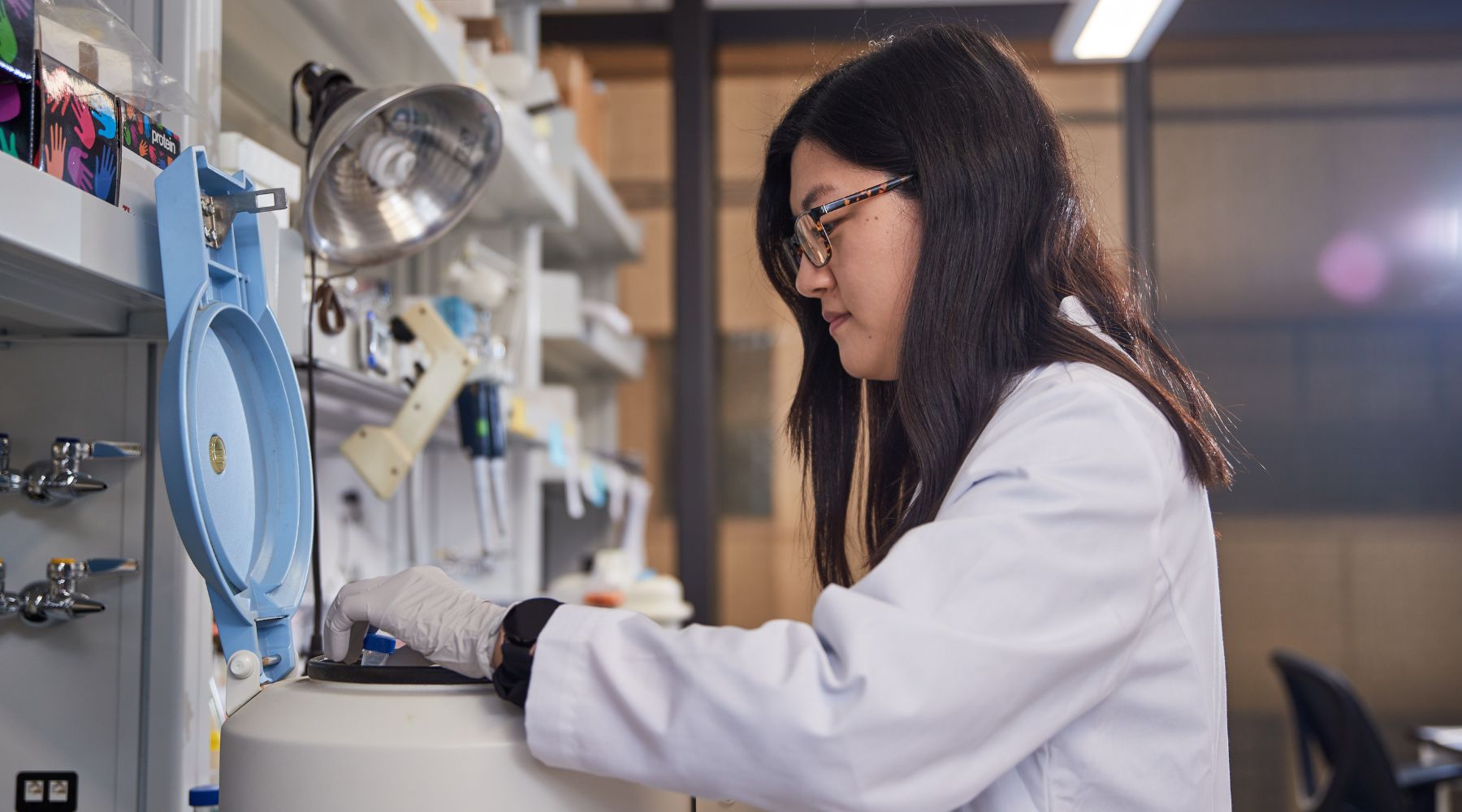Two scientists at the Oklahoma Medical Research Foundation have been awarded grants for research aimed at extending the period of good health as we age.
The American Federation for Aging Research and the Glenn Foundation for Medical Research awarded grants to OMRF’s Ann Chiao, Ph.D., and Matt Bubak, Ph.D. The organizations work together to support junior researchers focused on the basic biology of aging.
Chiao received a two-year, $125,000 grant from AFAR to better understand a molecule inside each cell that is crucial for generating energy. As we age, levels of that molecule, NAD+, slowly diminish within the heart. Chiao will study how this occurs, and the role it plays in fatigue, shortness of breath and other symptoms of decreased heart function in older people.
“There is a lot of research looking at NAD+ in aging-related diseases,” said Chiao, who joined OMRF in 2019 from the University of Washington. “What’s different about this study is that we are looking at it only within the mitochondria, the powerhouse of the cell.”
Chiao’s lab will focus on how and why the molecule dwindles in mitochondria and, in future research, whether medication could prevent it from happening.
Bubak is among nine scientists nationally to receive a one-year, $60,000 postdoctoral fellowship from the Glenn Foundation. He will explore the decline of skeletal muscle mass and function that begins around middle age.
His research will test whether muscles in older mice become more youthful following a plasma transfer from younger mice, and whether that benefit is enhanced if the donor mice exercise.
“The idea is that we can create a more youthful environment in old mice so that the muscles can respond to stress, such as exercise, like young mice,” said Bubak, who is a postdoctoral researcher in the lab of Benjamin Miller, Ph.D. “If we’re correct, then potentially the application for humans would be both simple and cost effective.”
Future studies will explore how long the youthful effects last following a plasma infusion, he said.
OMRF Aging and Metabolism Research Program Chair Holly Van Remmen, Ph.D., said the two grants ultimately could help reverse two key aspects of aging.
“These two scientists are trying to figure out how to make an older person’s heart and skeletal muscles work like those of a younger person,” Van Remmen said. “We know an active lifestyle prolongs the healthiest period of our lives, but for those who can’t or won’t exercise, this work could someday make a big difference.”



